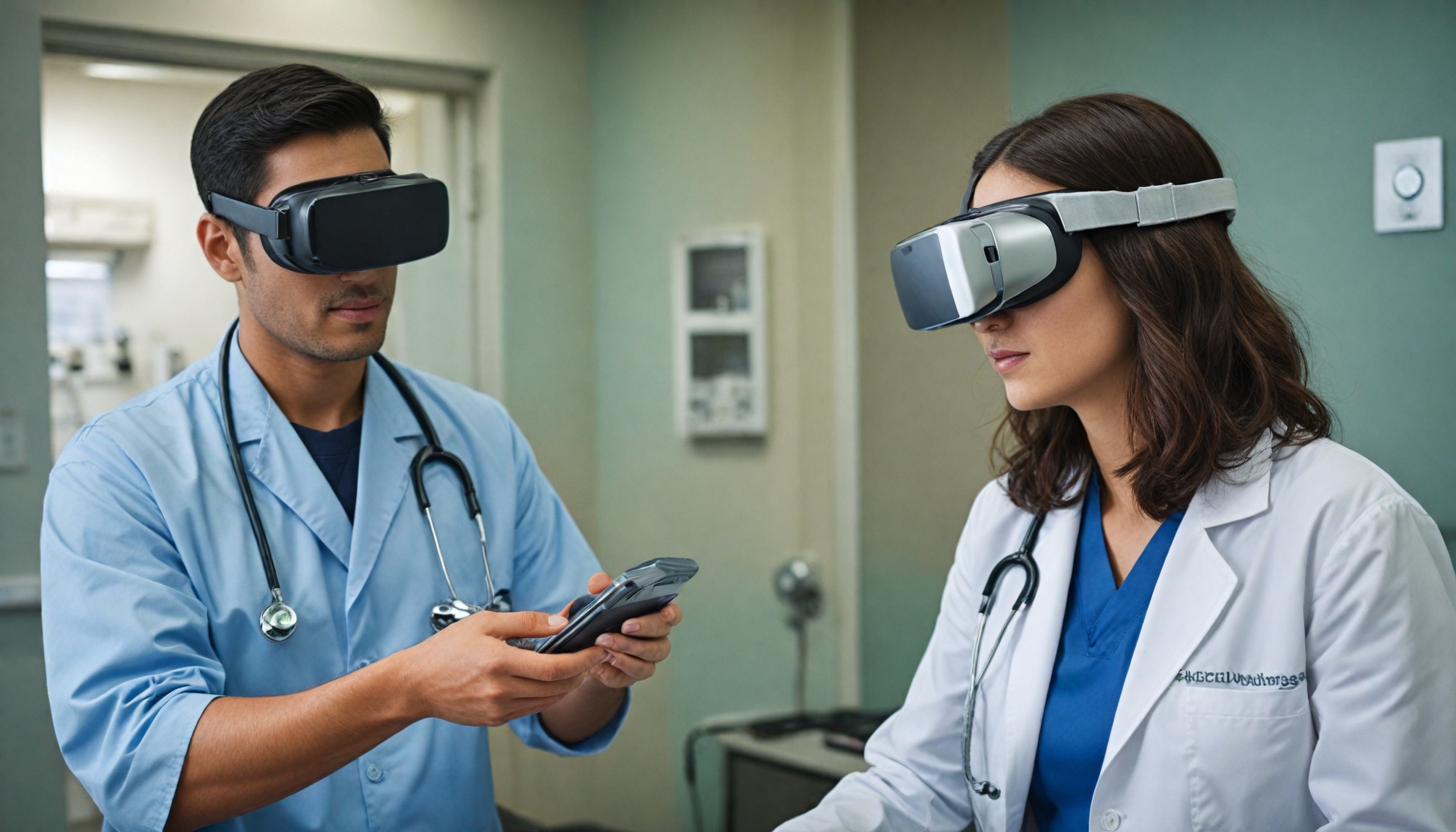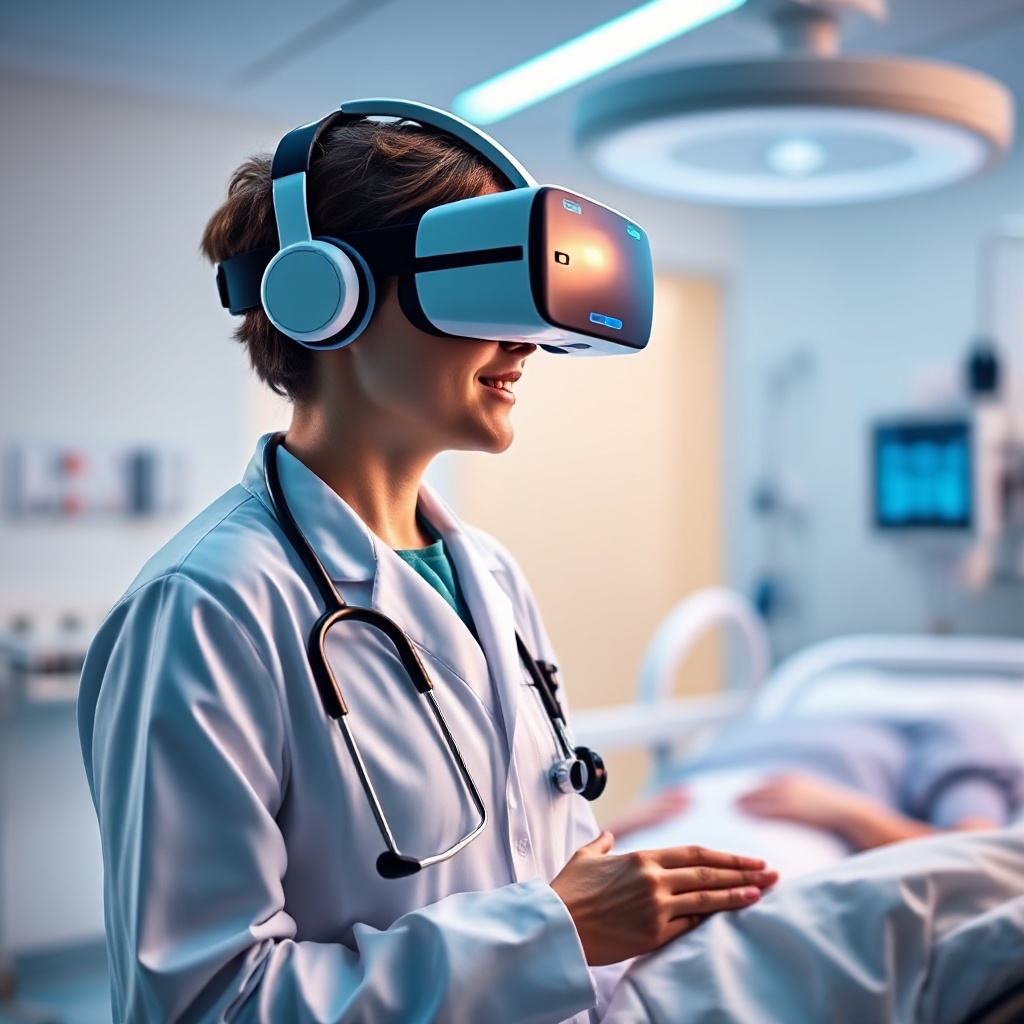
VR transforms healthcare with immersive environments that enhance patient care and help professionals develop empathy through perspective-shifting simulations.

Drivetech Partners
Virtual reality is revolutionizing healthcare delivery by creating immersive environments that benefit both patients and medical professionals. The technology extends beyond patient treatment to fundamentally transform how healthcare providers understand and connect with patients, utilizing perspective-shifting simulations that allow clinicians to experience medical scenarios from the patient's viewpoint.
Key Takeaways
The global VR healthcare market is projected to grow from $4.18 billion to $46.37 billion by 2032, representing a 35.1% CAGR
VR technologies make medical treatments more bearable by providing distraction during painful procedures and supporting mental health interventions
Healthcare professionals using VR simulations demonstrate enhanced empathy and communication skills, leading to improved patient trust
Medical training through VR shows a 230% improvement in surgical performance compared to traditional methods
VR-based mindfulness programs help combat healthcare worker burnout, increasing job satisfaction and team collaboration
Transforming Patient Experiences Through Virtual Reality
Virtual reality has emerged as a powerful tool in making medical treatments more tolerable for patients across various healthcare settings. By providing immersive distraction during painful procedures, VR technology creates alternative sensory experiences that help patients better cope with discomfort and anxiety.
The applications of VR in patient care span several key areas. Pain management programs use virtual environments to redirect attention away from physical discomfort. Mental health therapy, particularly VR-based cognitive behavioral therapy, creates safe spaces for patients to confront phobias or process trauma. Additionally, rehabilitation programs leverage VR to make repetitive exercises more engaging, while preoperative preparation helps familiarize patients with upcoming procedures.
Multiple studies confirm that VR interventions significantly decrease trauma and anxiety for patients undergoing medical procedures. This technological approach represents a shift toward more patient-centered treatment models that address both physical and psychological aspects of care.

Building Healthcare Professional Empathy Through Immersive Simulations
One of the most transformative applications of VR in healthcare is its ability to foster empathy among medical professionals. These perspective-shifting simulations allow doctors, nurses, and other healthcare workers to experience scenarios from the patient's point of view—something previously impossible to replicate in traditional training.
Through VR, healthcare professionals can feel what it's like to experience pre-surgery anxiety, chronic pain conditions, or the disorientation that comes with certain medical conditions. These experiences create profound emotional understanding that translates directly to clinical practice.
The enhanced empathy developed through VR training directly correlates with improved patient outcomes. When medical professionals better understand patient experiences, they communicate more effectively, build stronger trust relationships, and deliver more compassionate care. This emotional intelligence becomes a crucial component of treatment success and patient satisfaction.
Revolution in Medical Training and Education
Virtual reality is reshaping medical education by providing realistic, repeatable training environments without risk to actual patients. Medical students and professionals can practice complex procedures countless times, learning from mistakes in a controlled setting that mirrors real-world conditions.
The results speak for themselves: VR-trained surgeons demonstrate a remarkable 230% improvement in performance compared to those using traditional training methods. This translates to:
Improved surgical accuracy and precision
Enhanced confidence in procedural skills
Greater efficiency in operating room settings
Reduced complications and shorter procedure times
These immersive training environments allow medical professionals to gain experience with rare or high-risk scenarios that might otherwise take years to encounter in clinical practice. The ability to repeat procedures and learn through trial and error—without consequences to patients—represents a fundamental shift in medical education.
Battling Healthcare Worker Burnout
Healthcare worker burnout has reached crisis levels in many countries, making effective interventions crucial for maintaining workforce well-being. VR technology offers innovative stress-reduction tools through customizable mindfulness, meditation, and relaxation programs.
These VR-based wellness applications include guided meditation sessions, nature simulations that transport users to calming environments, and resilience training programs designed specifically for healthcare challenges. The immersive quality of VR creates more effective stress relief than traditional methods.
Addressing burnout through VR technology yields multiple benefits: increased job satisfaction, better team collaboration, and healthier work environments. This wellness approach ultimately benefits patients too, as refreshed healthcare providers deliver better care and maintain stronger connections with those they serve.
Key Technologies Driving Healthcare VR Adoption
The rapid adoption of VR in healthcare relies on several core technologies that continue to advance in sophistication and accessibility. Head-Mounted Displays (HMDs) like Oculus Rift, HTC Vive, Gear VR, and Google Cardboard provide the foundational immersive environments necessary for effective virtual experiences.
Beyond basic VR headsets, specialized equipment enhances the healthcare application of virtual reality. Smart glasses such as Google Glass enable surgical assistance and real-time data visualization. Haptic gloves add tactile feedback, creating more realistic training for procedures that require precise manual skills.
Specialized simulation and therapy software platforms support various clinical applications, from surgical training to patient therapy. These software solutions increasingly integrate with existing healthcare systems, making VR implementation more seamless across different medical settings.
The Economic Impact and Market Expansion
The virtual reality healthcare market is experiencing explosive growth, with projections indicating expansion to as much as $120.21 billion by 2035, representing a CAGR of 33.09%. This rapid financial trajectory reflects both the technology's effectiveness and its increasing adoption across global healthcare systems.
Several key factors drive this market expansion:
Improved digital infrastructure enabling more sophisticated VR applications
Government backing through healthcare innovation initiatives
Increased private and public healthcare technology investments
Growing acceptance of digital health solutions among patients and providers
Beyond the direct market growth, VR interventions reduce operational costs throughout healthcare systems. More efficient training reduces educational expenses, while improved patient outcomes decrease long-term treatment costs and resource utilization.
Emerging Trends and Future Directions
The future of VR in healthcare looks increasingly sophisticated as artificial intelligence integration creates more personalized treatment experiences. These AI-enhanced VR solutions adapt to individual patient needs, learning and evolving with each interaction to improve effectiveness.
Chronic disease management represents another frontier for healthcare VR, with applications expanding from acute care to long-term condition support. From diabetes management to cardiovascular rehabilitation, VR offers new approaches to persistent health challenges.
The integration with wearable medical devices creates comprehensive health solutions that combine monitoring capabilities with therapeutic interventions. Despite promising directions, the industry faces challenges including technology maturity issues, complex regulatory pathways, and ensuring equitable access across diverse populations.
As healthcare systems worldwide embrace digital transformation, virtual reality stands at the forefront of technologies reshaping both patient experiences and provider capabilities. The empathetic bridge VR creates between healthcare professionals and patients may ultimately prove its most valuable contribution to medicine.
Sources
The Business Research Company - Virtual Reality In Healthcare Market Report
Meta Tech Insights - Virtual Reality in Healthcare Market
GlobeNewswire - Virtual Reality Growth Trends Report
US Chamber of Commerce - How Virtual Reality Is Transforming Healthcare






